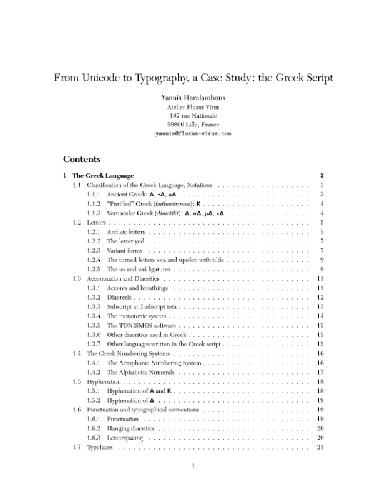- 2 402 202 книги
- Поиск
libcats.org









Chemical Weapons Destruction and Explosive Waste Unexploded Ordinance
Robert NoyesSome of the more difficult environmental problems facing the Department of Defense (DOD) include (1) chemical weapons destruction, (2) explosive waste remediation, and (3) unexploded ordnance clearance and extraction. It is conceivable that $50 to $100 billion will be spent by DOD for these three programs, offering unusual opportunities for environmental engineering and related firms.
Military installations are similar to small cities in terms of population, industrial activities, and some types of contaminated sites. However, some cover an area larger than a small state. DOD has operated industrial facilities on its installations for several decades that have generated, stored, recycled, or disposed of hazardous wastes. Many of these activities have contaminated the nearby soil and groundwater. To study and clean up contaminated sites, DOD established the Installation Restoration Program (IRP) in 1975. In 1984, the IRP was made part of the Defense Environmental Restoration Program.
The Secretary of Defense delegated cleanup responsibility to the Army, Navy, the Air Force, and the Defense Logistics Agency (DLA). Cleanup actions are usually accomplished under contract with private firms, which are monitored by the services. Most cleanup actions are funded through the Defense Environmental Restoration Account (DERA) and the Base Realignment and Closure Account. Congress established DERA in 1984 to fund the cleanup of inactive contaminated sites on DOD installations.
The technology to clean up the conventional hazardous wastes on DOD sites are the same as those utilized for industrial sites, and well-documented by this publisher.
However, there are three DOD programs that require the utilization of somewhat unusual or different technologies that have not been as well documented. These three programs are:
1. Chemical weapons destruction
2. Remediation of explosives contaminated soils and lagoons
3. Unexploded ordnance detection, clearance, and extraction
This book discusses the current and potential treatment technologies involved in these three programs.
Military installations are similar to small cities in terms of population, industrial activities, and some types of contaminated sites. However, some cover an area larger than a small state. DOD has operated industrial facilities on its installations for several decades that have generated, stored, recycled, or disposed of hazardous wastes. Many of these activities have contaminated the nearby soil and groundwater. To study and clean up contaminated sites, DOD established the Installation Restoration Program (IRP) in 1975. In 1984, the IRP was made part of the Defense Environmental Restoration Program.
The Secretary of Defense delegated cleanup responsibility to the Army, Navy, the Air Force, and the Defense Logistics Agency (DLA). Cleanup actions are usually accomplished under contract with private firms, which are monitored by the services. Most cleanup actions are funded through the Defense Environmental Restoration Account (DERA) and the Base Realignment and Closure Account. Congress established DERA in 1984 to fund the cleanup of inactive contaminated sites on DOD installations.
The technology to clean up the conventional hazardous wastes on DOD sites are the same as those utilized for industrial sites, and well-documented by this publisher.
However, there are three DOD programs that require the utilization of somewhat unusual or different technologies that have not been as well documented. These three programs are:
1. Chemical weapons destruction
2. Remediation of explosives contaminated soils and lagoons
3. Unexploded ordnance detection, clearance, and extraction
This book discusses the current and potential treatment technologies involved in these three programs.
Популярные книги за неделю:

Проектирование и строительство. Дом, квартира, сад
Автор: Петер Нойферт, Автор: Людвиг Нефф
Размер книги: 20.83 Mb

Система упражнений по развитию способностей человека (Практическое пособие)
Автор: Петров Аркадий НаумовичКатегория: Путь к себе
Размер книги: 818 Kb

Сотворение мира (3-х томник)
Автор: Петров Аркадий НаумовичКатегория: Путь к себе
Размер книги: 817 Kb

Радиолюбительские схемы на ИС типа 555
Автор: Трейстер Р.Категория: Электротехника и связь
Размер книги: 13.64 Mb
Только что пользователи скачали эти книги:

From Unicode to Typography. Greek script
Автор: Haralambouss.Категория: Engineering, Typesetting
Размер книги: 739 Kb

Криогенные микротеплообменники
Автор: ДилевскаяКатегория: 2239566-Подборка книг по криогенной технике
Размер книги: 5.88 Mb

Wine Microbiology: Practical Applications and Procedures
Автор: Kenneth C. Fugelsang, Автор: Charles G. Edwards
Размер книги: 3.64 Mb

Special Edition Using TCP/IP
Автор: NIIT (USA) Inc., Автор: Ramadas Shanmugam, Автор: R. Padmini, Автор: S. Nivedita, Автор: NIIT USA Inc.Категория: programming_development, general
Размер книги: 41.00 Mb

Webster's English to Spanish Crossword Puzzles: Level 7
Автор: Philip M. Parker
Размер книги: 920 Kb





